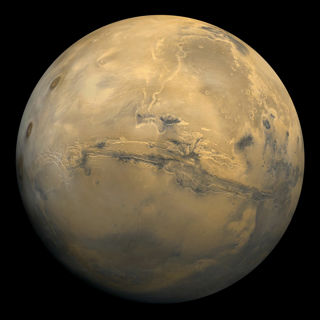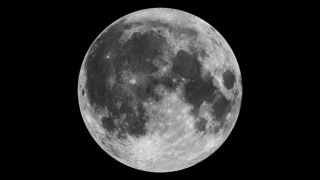
What's Happening in Space: May 2025
- 2nd May 2025
- Author: Dhara Patel
A summary of space events through the month
The National Space Centre's Space Expert Dhara Patel is here once again to share her excellent round-up of some notable space and science events coming up in the weeks ahead...
Throughout May – spot the International Space Station
There may be sightings throughout May to spot the International Space Station (ISS) moving across the sky – use NASA’s Spot the Station to find out when and where to spot the largest artificial satellite overhead. It’ll look like a bright star moving relatively quickly across the sky (generally from west to east) and will be visible to the naked eye. There are daily sightings in the early morning from Leicester throughout the first week of May (perhaps the most practicable would be around 4:20am on the 1st, 3rd, 5th, or 7th May). You could also look out for other opportunities through the latter part of May.
Throughout May – Stargazing challenges
Each month, we'll be sharing a trio of stargazing challenges for everyone to have a go at. From spotting the Moon and familiar star patterns, to catching meteor showers and some deep sky objects. Check out our Stargazing Challenges - May 2025 blog for more details.

3rd May – Moon and Mars close in the sky
Look for Mars positioned beside the Moon during the evening of 3rd May in the south-western sky. The first quarter moon will be in conjunction (sharing the same right ascension – coordinate) with Mars just after midnight on 4th May. They should be visible from sunset as the sky begins to darken, up until the early hours of the following morning when they’ll set in northwestern sky. The best time to view them will be when they’re closest together and high in the sky – so try and spot them during the late evening in the hours before midnight – they’ll be visible to the naked eye. On the following night, Mars will make a close approach to the Beehive Cluster – lying just to the right of this open cluster or roughly 1000 stars. The Beehive Cluster can be made out with the naked eye but is best viewed through a pair of binoculars or a telescope. Find out more about close approaches and conjunctions in our astronomical phenomena blog written by David Southworth in our Education Team.
5th/6th May – peak of the Eta Aquariid meteor shower
A moderate shower, with ~ 50 meteors per hour at its peak, produced by dust left behind by Halley’s Comet, the meteors from the Eta Aquariids will radiate from the constellation Aquarius (appearing in the east in the early hours of the morning), but will be visible all over the sky. Peaking between midnight and the early hours of the 6th, the waxing gibbous moon will be up throughout the night only setting in the early hours night, and the radiant will continue to rise higher into the sky during the early morning of the 6th creeping above the eastern horizon around 3:00, so best viewing will be from a dark location in the hours just before sunrise. If you miss the peak, the shower is active between 19th April and 28th May. You can find out more in our blog about the Eta Aquariid meteor shower 2025.
11th May – TRACERS mission launch
Currently targeted to launch on 11th May, NASA’s TRACERS mission will take off on a SpaceX Falcon 9 rocket from Vandenberg Space Force Base in California, USA. Tandem Reconnection and Cusp Electrodynamics Reconnaissance Satellites (TRACERS) is made up of two identical satellites that will orbit Earth in tandem (one following the other). The mission is designed to help us understand magnetic reconnection (when activity from the Sun interacts with Earth’s magnetic field) along with its effects in Earth’s atmosphere, so we can better understand and prepare for impacts of solar activity on Earth. TRACERS will rideshare with / launch alongside a few other spacecrafts: SPRITE, Athena & PExT.
12th May – full moon (17:55)
Known as the Flower moon (according to the old Farmers’ Almanac), this full moon is named after the abundance of flowers that bloom as spring truly gets underway. Check out the Full Moon: Full Facts blog written by Mike Darch in our Education team to find out more.

22nd May – Moon and Saturn close in the sky
Look for the thin waning crescent moon near Saturn during the early morning of 22nd May before sunrise in the eastern sky. The Moon will be in conjunction (sharing the same right ascension – coordinate) with Saturn later that day whilst below the horizon, so the best time to spot the duo close together is either the morning of the 22nd (when the Moon will appear to the right of Saturn or 23rd May when it will appear to the left of it. Look for the pair around 4:00, before daylight begins to drown them out. They’ll be visible to the naked eye, but clear views without tall buildings and trees will help you spot them more easily especially as they’ll be low on the horizon. Check out the astronomical phenomena blog linked above to find out more about close approaches and conjunctions.
24th May – Moon and Venus close in the sky
Look for the very thin waning crescent moon near Venus during the early morning of 24th May before sunrise in the eastern sky. Venus will appear like a bright star and sit to the right of the Moon. The Moon will be in conjunction (sharing the same right ascension – coordinate) with Venus just after midnight whilst they are below the horizon, so the best time to spot the pair close together is around 4:00, before the sun rises and daylight drowns them out. They’ll be visible to the naked eye, but clear views without tall buildings and trees will help you spot them more easily especially as they’ll be low on the horizon. Check out the astronomical phenomena blog linked above to find out more about close approaches and conjunctions.
27th May - new moon (4:02)
The new moon will occur in the constellation of Taurus. The lack of moonlight interference provides a great time to try and view deep sky objects (especially with the aid of binoculars and telescopes). We have a blog on Moon phases written by Mike Darch in our Education team.
28th May – Moon and Jupiter close in the sky
Look for Jupiter close to the Moon during the evening of 28th May, in the north-western sky. The extremely thin waxing crescent moon will be in conjunction (sharing the same right ascension – coordinate) with Jupiter that afternoon but won’t be visible during daylight hours. But the duo should be visible with the naked eye after sunset as the sky begins to darken. However, by this time Jupiter will be very close to the horizon with the Moon sitting a little higher above it. Jupiter will set around 22:00 with the Moon going down about an hour later so make sure you have clear views of the horizon to spot them low in the north-west. Check out the astronomical phenomena blog linked above to find out more about close approaches and conjunctions.

29th May – Axiom Mission 4 (Ax-4) launch
A SpaceX Falcon 9 rocket will launch a Crew Dragon spacecraft to the International Space Station on Axiom Mission 4. The commercial mission will include former NASA astronaut Peggy Whitson as commander, Shubhanshu Shukla of India, Sławosz Uznański of Poland, and Tibor Kapu of Hungary. This will be India and Poland's first crewed trip to the ISS and Shubhanshu Shukla is one of the astronauts already chosen for India’s first crewed Gaganyaan mission in 2026 – the nation’s first human spaceflight programme. Axiom-4 will launch from Kennedy Space Center, Florida and is currently scheduled for 18:00 on 29th May. The mission is planned to last up to two weeks and the astronauts on board will carry our science, outreach, and commercial activities. Find out more about the private space company in our blog: Axiom Space
31st May – Venus at greatest western elongation
Because Venus orbits closer to the Sun than Earth, it always appears close to the Sun in the sky. However, Venus will be at its furthest separation from the Sun as seen from Earth on 31st May when it reaches greatest western elongation, making it a great time to try and spot the ‘Earth’s twin planet’. Look to the southeast just before sunrise – it will be low on the horizon, so a good clear view without tall buildings and trees will be helpful. Check out the astronomical phenomena blog above to find out more about greatest elongations and other astronomical phenomena.
May?? – Tianwen 2 mission launch
Currently scheduled for launch in May, the China Aerospace Science and Technology Corporation (CASC) Tianwen 2 mission is set to return samples from near-Earth asteroid 469219 Kamo’oalewa. This asteroid shares a similar orbit to Earth around the Sun and appears to orbit Earth. It is a small, near-Earth asteroid, likely a fragment blasted from the Moon's Giordano Bruno crater. The mission aims to collect about 1kg of samples from its surface using both touch-and-go and anchor-and-drill approaches. After delivering the samples back to Earth (around 2.5 years after launch), the main spacecraft will continue its mission by rerouting to comet 311P/PANSTARRS, arriving around seven years later. Tianwen 2 will take off on a Long March rocket from Xichang Satellite Launch Center in China and represents China's first asteroid sample return mission and its first dual-target mission exploring both an asteroid and a comet.
Please note: As this summary is created at the end of the month before, dates (especially launch dates) can often change or be updated, so this content may become outdated - we always recommend checking on the relevant organisation's pages.
